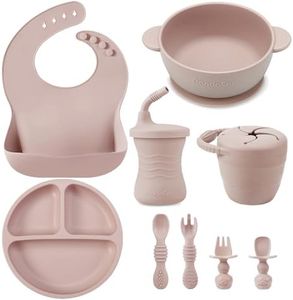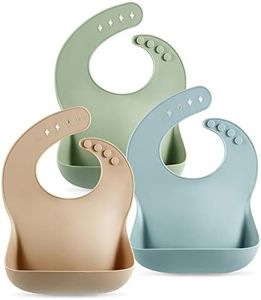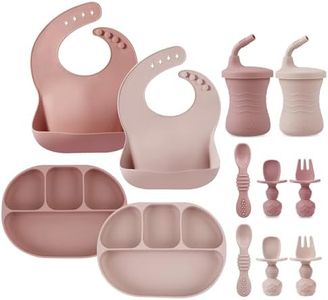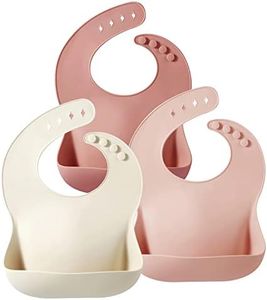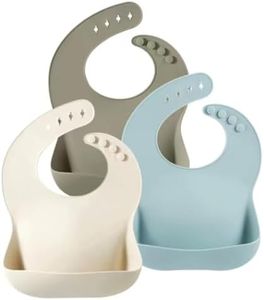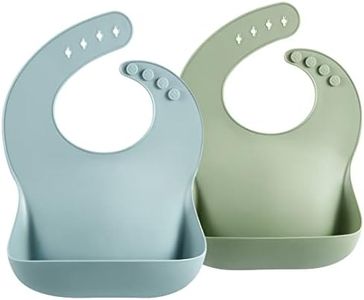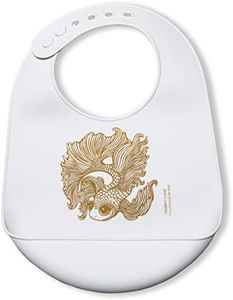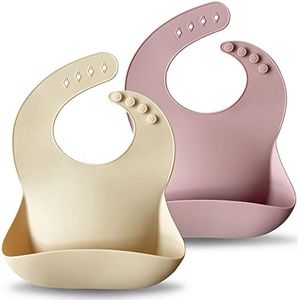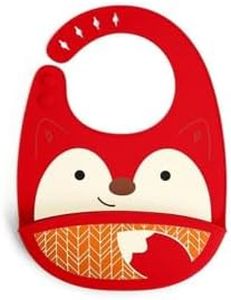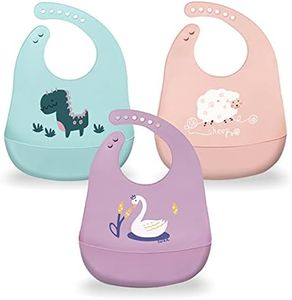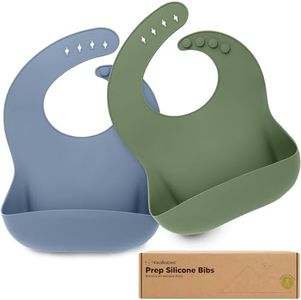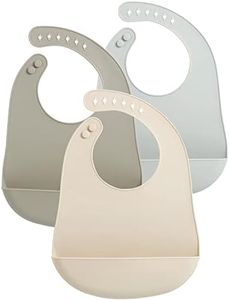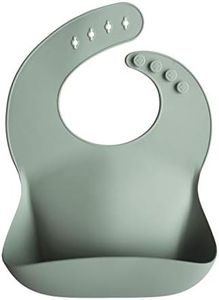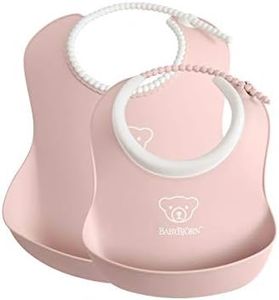We Use CookiesWe use cookies to enhance the security, performance,
functionality and for analytical and promotional activities. By continuing to browse this site you
are agreeing to our privacy policy
10 Best Silicone Baby Bibs
From leading brands and best sellers available on the web.Buying Guide for the Best Silicone Baby Bibs
Choosing the right silicone baby bib can make feeding time easier for both you and your child. These bibs are valued for their durability, ease of cleaning, and comfort. To pick the best fit, it's important to look beyond just color or brand and consider how the bib will suit your child's needs and your daily routine. Thinking through key features will help you find a bib that truly works for your family.Material QualityMaterial quality refers to the grade and safety of the silicone used. High-quality silicone is soft, flexible, and free from harmful chemicals like BPA, phthalates, and PVC, making it safe for your child's sensitive skin and for putting in their mouth. Food-grade silicone is the best to look for. When comparing bibs, choose ones that clearly state they use food-grade, non-toxic silicone, as this ensures both safety and durability.
AdjustabilityAdjustability means how well the bib can be fitted to your baby’s neck size. Most silicone bibs have buttons or notches, and the number of size options can vary. A bib with more adjustability will fit better as your child grows. Look for bibs with several fastening points or a wide range of sizing to ensure a snug and comfortable fit through different growth stages.
Crumb Catcher PocketA crumb catcher pocket is a wide, deep section at the bottom of the bib designed to catch food that misses your child's mouth. The depth and stiffness of this pocket vary: deeper and firmer pockets do a better job collecting mess, but some very soft bibs may collapse easily. If your child is a messy eater or enjoys self-feeding, prioritize bibs with a sturdy, rounded pocket. For older children or lighter eaters, a slimmer pocket might suffice.
Ease of CleaningEase of cleaning covers how simple it is to wash the bib after use. Good silicone bibs should be easy to wipe down, rinse, or put in the dishwasher. Some designs have crevices that can trap food, making them harder to clean thoroughly. If you’re short on time or want minimal effort, look for bibs that are advertised as dishwasher-safe and with smooth surfaces that don’t trap food.
Comfort and FlexibilityComfort and flexibility are about how the bib feels against your baby’s skin and how well it moves with their body. A comfortable bib is soft, lightweight, and doesn’t chafe around the neck. Thinner, more flexible silicone is gentler and easier for babies to wear, but may not be as robust. If your child is sensitive or dislikes wearing bibs, opt for soft, lightweight models.
Size and CoverageSize and coverage relate to how much of your baby’s front is protected by the bib. Larger bibs cover more area and provide better protection for clothing, especially during early stages of self-feeding. Smaller bibs may be less cumbersome for older, tidier eaters, but might not catch as much mess. Think about your child’s eating habits and age—choose more coverage for toddlers learning to eat, and potentially less for older babies who are neater.
